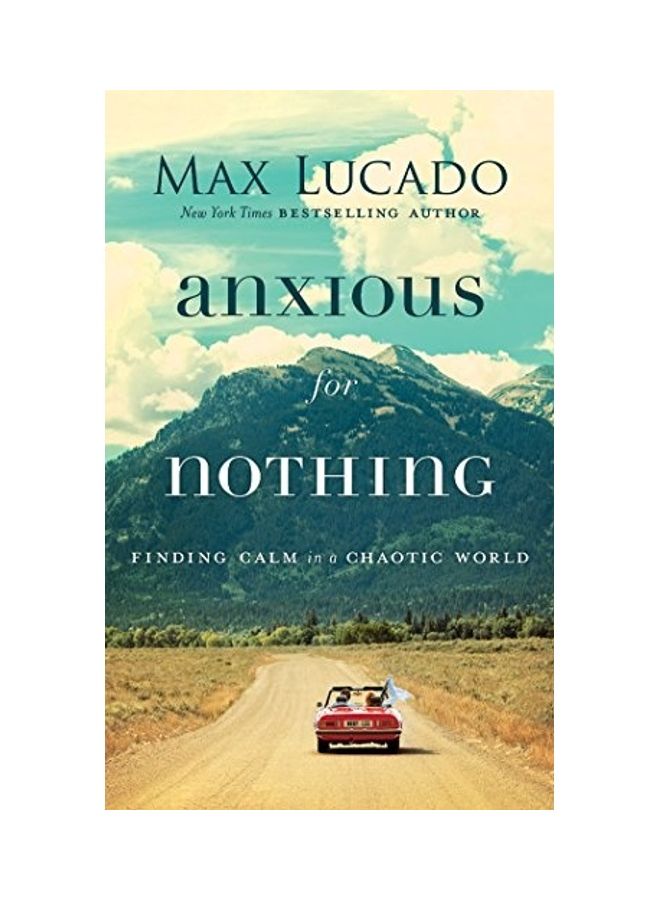CREATESPACE The Greatest Cities of Ancient Mesopotamia: The History of Babylon, Nineveh, Ur, Uruk, Persepo
Was:
AED96.00
Now:
AED 80.00 Inclusive of VAT
Saving:
AED 16.00 AED16% Off
 Free Delivery
Free Delivery Only 1 left in stock
Only 1 left in stock Free Delivery
Free Delivery Only 1 left in stock
Only 1 left in stock
Get it by 28 Feb

Earn 5% cashback with the Mashreq noon Credit Card. Apply now




1
Free delivery on Lockers & Pickup Points
Learn more
Enjoy hassle free returns with this offer.
Highlights
- Createspace Independent Publishing Platform
- Charles River Editors
- Greatest Cities of Ancient Mesopotamia
Specifications
| Publisher | Createspace Independent Publishing Platform |
| ISBN 13 | 9781540701442 |
| ISBN 10 | 1540701441 |
| Author | Charles River |
| Book Format | Paperback |
| Language | English |
| Book Description | *Includes pictures *Includes ancient accounts of the cities *Includes online resources and bibliographies for further reading Long before Alexandria was a city and even before Memphis and Babylon had attained greatness, the ancient Mesopotamian city of Ur stood foremost among ancient Near Eastern cities. Today, the greatness and cultural influence of Ur has been largely forgotten by most people, partially because its monuments have not stood the test of time the way other ancient culture's monuments have. For instance, the monuments of Egypt were made of stone while those of Ur and most other Mesopotamian cities were made of mud brick and as will be discussed in this report, mud-brick may be an easier material to work with than stone but it also decays much quicker. The same is true to a certain extent for the written documents that were produced at Ur. No site better represents the importance of the Sumerians than the city of Uruk. Between the fourth and the third millennium BCE, Uruk was one of several city-states in the land of Sumer, located in the southern end of the Fertile Crescent, between the two great rivers of the Tigris and the Euphrates. Discovered in the late 19th century by the British archaeologist William Loftus, it is this site that has revealed much of what is now known of the Sumerian, Akkadian, and Neo-Sumerian people. Hattusa was different from the other major cities of the ancient Near East in one major respect: it was landlocked and not located on a major river. At first glance, such a situation may seem like a liability, which it was in terms of trade, but for the most part its central position meant that the Hittites could move their armies more efficiently from one theater of operations to another (Macqueen 2003, 56). As a landlocked capital, Hattusa was also safe from naval attacks from other kingdoms, so if the Hittites' enemies wanted to invade their capital, they would have to trek through the middle of the kingdom to get there, which was most unlikely. As Hittite power grew during the Old Kingdom, the royal city of Hattusa became more important and even wealthier. From his citadel overlooking Hattusa, Hattusili I launched the first major Hittite attacks into the Near East, first conquering the cities between Hattusa and the Mediterranean (Macqueen 2003, 36). Although the Biblical accounts of the Assyrians are among the most interesting and are often corroborated with other historical sources, the Assyrians were much more than just the enemies of the Israelites and brutal thugs. Among all the cities that thrived in the ancient Near East, few can match the opulence and ostentatiousness of Nineveh, the capital of the Assyrian Empire for much of the seventh century BCE. During that time it became known for its mighty citadels, grand palaces, beautiful gardens, and even its zoos. In fact, the beauty of Nineveh, especially its gardens, impressed later writers so much that they assigned its gardens as one of the original Seven Wonders of the World, except unfortunately for Nineveh's memory, the location was placed in Babylon. The confusion that assigned one of the Wonders of the World to Babylon instead of Nineveh is in fact a large part of Nineveh's history - it was a great city during its time, but incessant warfare brought the metropolis to oblivion and eventually its history was forgotten or distorted. Today, Babylon has become a byword for greed, excess, and licentiousness, mostly due to its mention in the Bible, but a closer examination reveals that Babylon was so much more, and even perhaps the most important city in the ancient world. Ancient Babylon was home to great dynasties that produced some of the world's most influential leaders, most notably Hammurabi and Nebuchadnezzar. |
| Publication Date | 29 November 2016 |
| Number of Pages | 352 pages |
CREATESPACE The Greatest Cities of Ancient Mesopotamia: The History of Babylon, Nineveh, Ur, Uruk, Persepo
Added to cart
Cart Total AED 80.00




























































































































